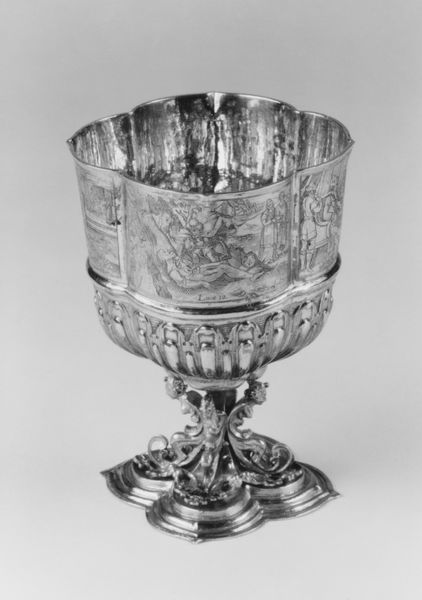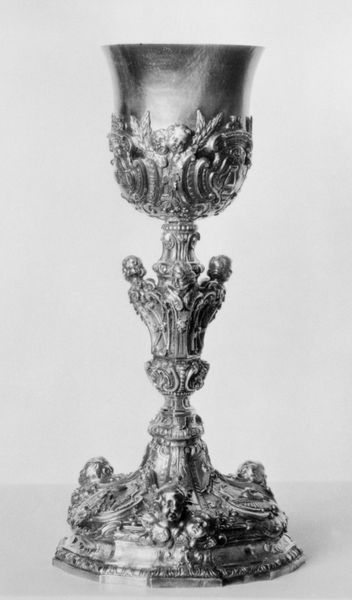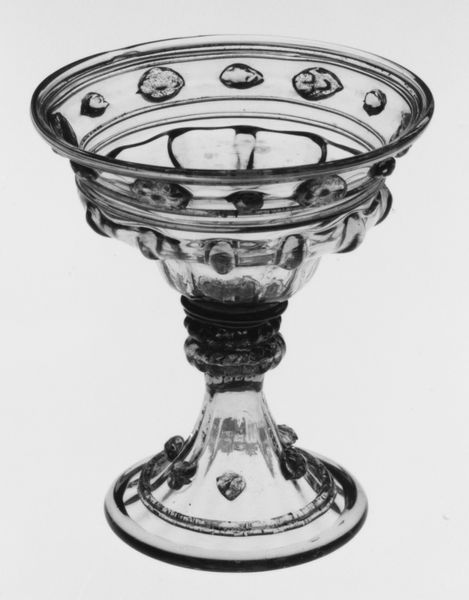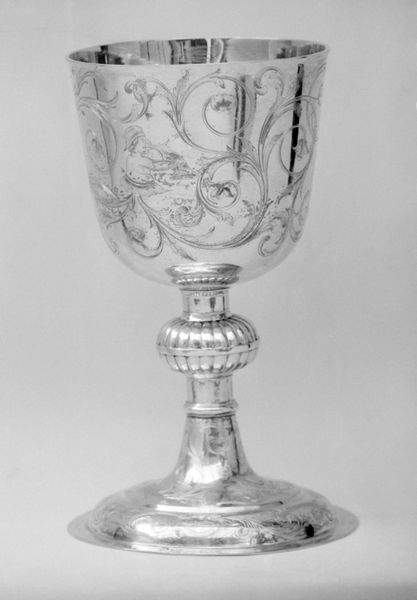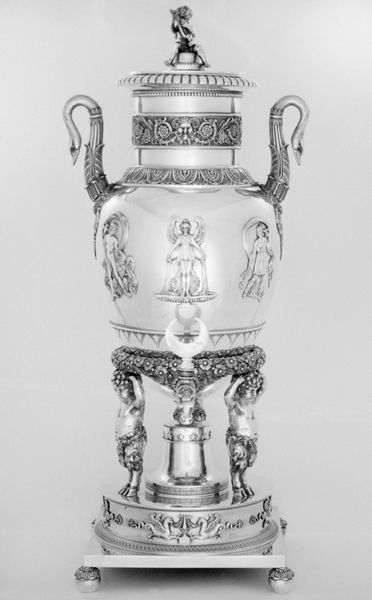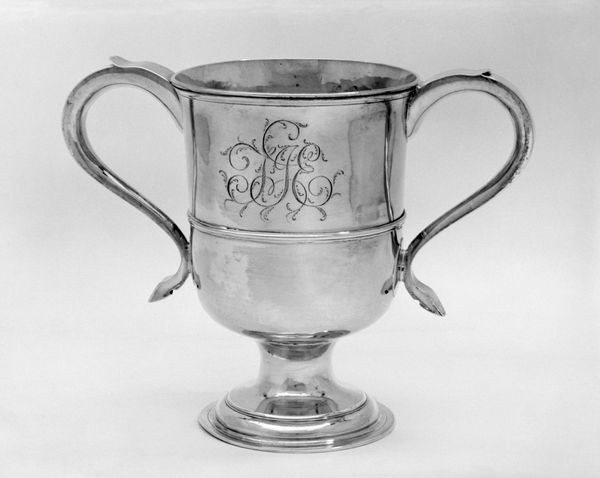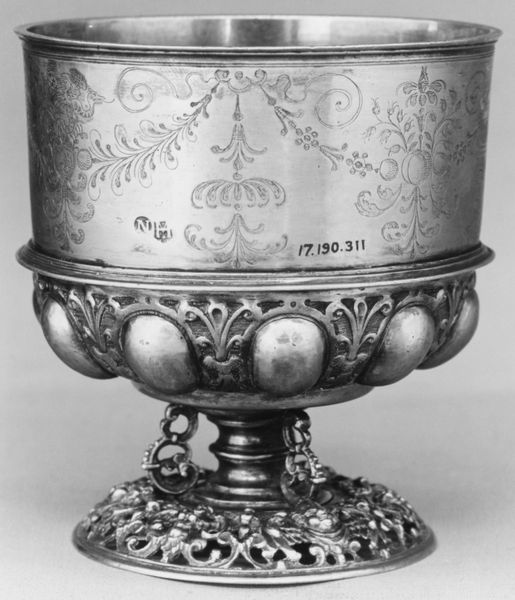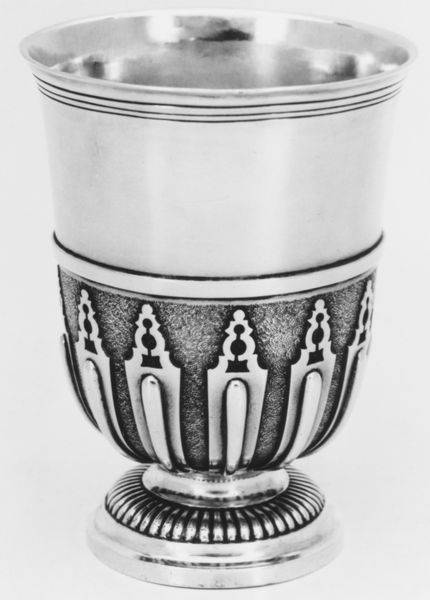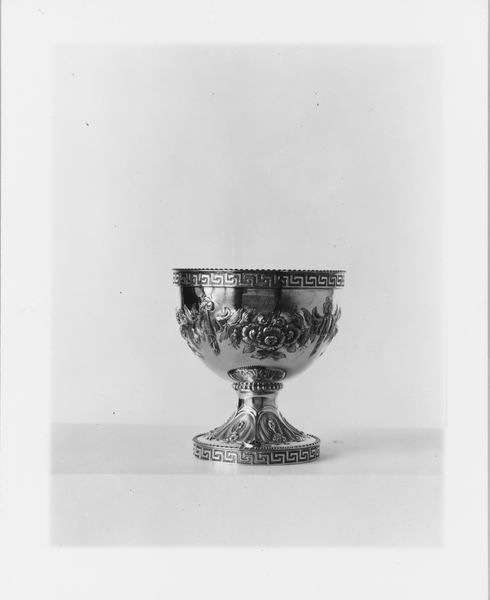
Cup with scenes from the New Testament (one of a pair) 1600 - 1615
0:00
0:00
silver, sculpture, engraving
#
silver
#
baroque
#
sculpture
#
decorative-art
#
engraving
Dimensions: Overall: 4 1/4 × 3 3/8 in. (10.8 × 8.6 cm)
Copyright: Public Domain
Curator: I find myself drawn to the emotional gravity of this silver cup dating from 1600 to 1615, crafted by Franz Fischer. Known as "Cup with scenes from the New Testament," this Baroque artwork resides here at The Met. Editor: My initial reaction is a kind of awe at the level of detail. The scenes almost seem to float above the meticulously crafted foliage beneath. There's a delicate balance, isn't there, between sacred narrative and sheer opulence? Curator: Precisely! Baroque art often walked that fine line. It’s vital to remember the Reformation shaped artistic expression; religious objects now carried heightened political weight, showcasing power through iconography but, simultaneously, also through sheer craft. These were turbulent times, the cup existing during an era of immense religious and social restructuring. Editor: And these images etched upon the silver, episodes from the New Testament… What meanings are subtly embedded in these choices? What narratives of salvation and perhaps also social justice did such imagery intend to evoke? Is it to serve solely as an ornamental function of glorification? Curator: These New Testament scenes weren’t just illustrations, but tools for conveying messages, and bolstering systems of beliefs in a way. And what kind of power does this type of medium evoke now, after decades of political and cultural shifting? The choice of scenes, the style, would all have resonated with a specific viewership, reminding them of theological tenets, affirming their identity and place. Editor: I am equally struck by the enduring nature of symbolism. Silver itself holds meaning - purity, wealth, but also, metaphorically, as something malleable, refined under pressure. These qualities would underscore themes inherent in the Biblical stories that are represented, that faith is transformative, forged in difficulty, resulting in a kind of spiritual refinement. Curator: I agree! In exploring art like this piece, it offers space to interpret history, material culture, and theology, connecting art historical study with our understanding of contemporary experiences. Editor: A striking synthesis of artistry and meaning—reminding us that objects, even decorative ones, serve as compelling reflections of the human experience.
Comments
No comments
Be the first to comment and join the conversation on the ultimate creative platform.
